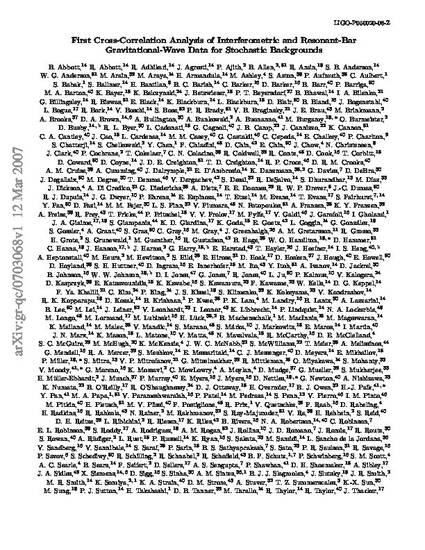
Data from the LIGO Livingston interferometer and the ALLEGRO resonant-bar detector, taken during LIGO's fourth science run, were examined for cross correlations indicative of a stochastic gravitational-wave background in the frequency range 850-950 Hz, with most of the sensitivity arising between 905 and 925 Hz. ALLEGRO was operated in three different orientations during the experiment to modulate the relative sign of gravitational-wave and environmental correlations. No statistically significant correlations were seen in any of the orientations, and the results were used to set a Bayesian 90% confidence level upper limit of Ωgw(f)≤1.02, which corresponds to a gravitational-wave strain at 915 Hz of 1.5×10-23Hz-1/2. In the traditional units of h1002Ωgw(f), this is a limit of 0.53, 2 orders of magnitude better than the previous direct limit at these frequencies. The method was also validated with successful extraction of simulated signals injected in hardware and software. © 2007 The American Physical Society.
Available at: http://works.bepress.com/tiffany_summerscales/168/
